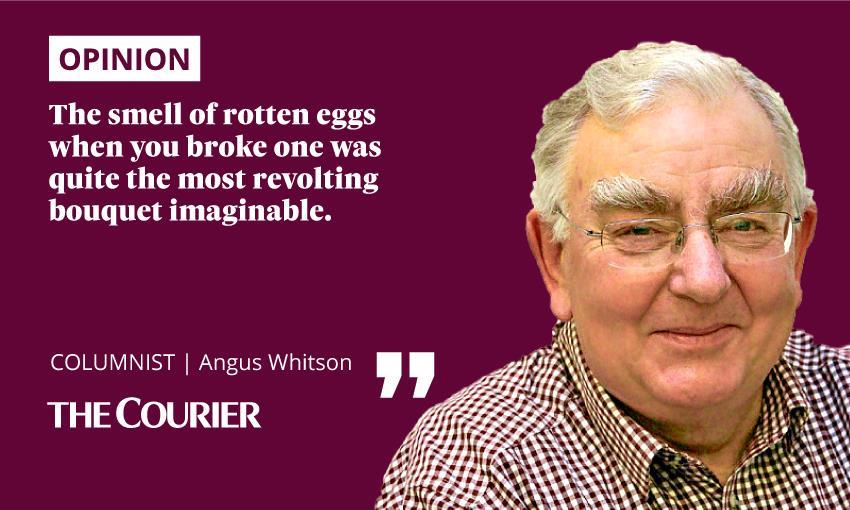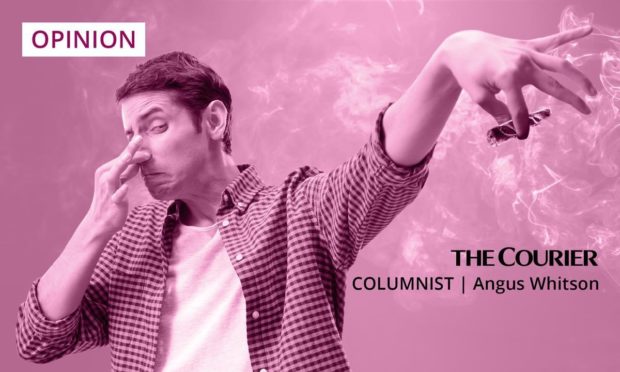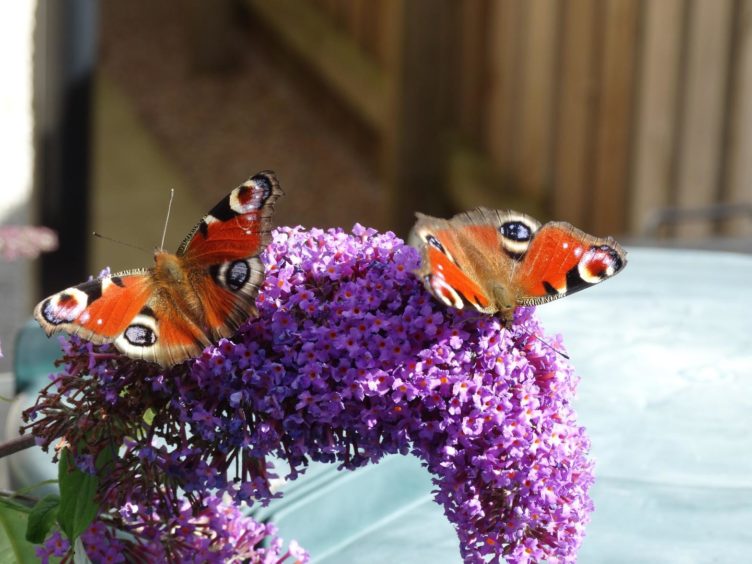This column thrives on the readers who get in touch and share their own stories.
A Friockheim reader called with a classic tale which had me laughing.
In 1945 he was a van boy with McVitie & Price delivering biscuits all round Angus.
He remembered Mrs Pert’s Trick Shop which I wrote about a fortnight ago and still has a stink bomb bought from her shop which he keeps in a wee box carefully wrapped in cotton wool.
I told him it must be one of the few stink bombs left in the world and it has to be a pretty dubious antique now.

Stink bombs were well named.
The smell of rotten eggs when you broke one was quite the most revolting bouquet imaginable and you would wonder at the state of mind of the man who invented them.
My caller told me he was chappin’ on ninety – a young-at-heart-ninety if he’s still thinking about stink bombs.
As a gastronomic aside, McVitie & Price make Rich Tea biscuits.
They were a favourite in our house when I was small and my mother never asked if I wanted a biscuit but if I wanted a McVitie’s.
From stink bombs to swallows
The same reader was telling me about the swallows nesting in his carport.
A pair had been raising a late brood but, sadly, their nest was destroyed by his cat.
A handy shelf meant the cat could climb up to the nest, knock it down and take the chicks.
It’s late in the season but in the past we have had swallows nesting in our garage nearly at the end of the month.
Swallows lay from May to August, usually two broods but sometimes three.
What is so impressive is that if these chicks had fledged successfully they would have set off with their parents in about a month on the long journey to their Southern Africa winter quarters.
& the house seems to draw close warblers & swallows at the end of these long afternoons – summer birds conditioning to rebound into distance pic.twitter.com/EYC2U0FRpp
— David Borthwick (@BorthwickDave) September 8, 2021
It’s staggering to think that such small birds – an adult weighs about 60 grams or 2 ozs – are strong enough for such an epic flight.
They come to Britain because of the long summer daylight hours and the resulting abundance of insect food.
As the weather cools, and the availability of the flying insects the swallows feed on declines with the onset of autumn, the birds must follow the food and move on.
Why did the pheasant cross the road?
It’s the time of year when you need to keep an eye out for late hatched pheasants.
They are the ones still growing their tail feathers.
You wee them wandering round the roadsides and paying too little attention to oncoming traffic, apparently convinced of their immortality.
They are picking up grit. The young pheasants have no teeth and need the grit, which they retain in their gizzards, to break down hard food such as seeds and help their digestion.
They face another potentially fatal threat of course. The shooting season for pheasants starts on October 1.
Whatever you may think of that activity, I don’t think these young birds are going to provide any sort of sport until a lot nearer the end of the season – which may be their salvation.
Butterflies, bees and a buddleia
Buddleia is known as the butterfly bush and we have purple and white bushes which have been in flower for three weeks.
Painted Ladies, Red Admirals, Peacocks and Small Whites have been regular visitors to the blossom.
I watch them feeding, their long proboscis or flexible feeding tube normally kept curled up inside their mouths, probing into each individual buddleia floret for the life-sustaining nectar.
It attracts other pollinators too.
There are hover flies and wasps and several varieties of bumblebees, but I’m concerned to see so few honeybees.
There’s an interaction between the pollinators and the flowers – the pollinators rely on the flowers for sustenance and the flowers rely on the pollinators for pollination.
Signing in time for the birds
All birds need to moult and replace old and damaged feathers and autumn is when the moult occurs in most of our garden songbirds.
Breeding has finished and there is no need for brilliant plumage to attract mates, and the new warm feathers will help see them through the cold winter months.
The loss of feathers while new ones are growing can affect flying and they will make themselves inconspicuous until the moult is complete.
The autumn chorus is shorter – a brief exchange of calls, almost like signing in for the day, and then silence
Birds are less vocal during the moult – the full-throated spring chorus that wakes us each morning before dawn is low key just now.
Its purpose is to attract mates and to defend territory during mating.
The autumn chorus is shorter – a brief exchange of calls, almost like signing in for the day, and then silence.
Singing takes energy and birds need to conserve their energy to get through the autumn and winter days.
Life is precarious for the small garden songbirds when the frosts come.
They don’t build up fat reserves and during winter their day is an endless hunt for food to ensure they have the extra energy needed to keep warm and see them through the long winter nights.
MAN WITH TWO DOGS: Days of dog roses, and a dog, by the river

